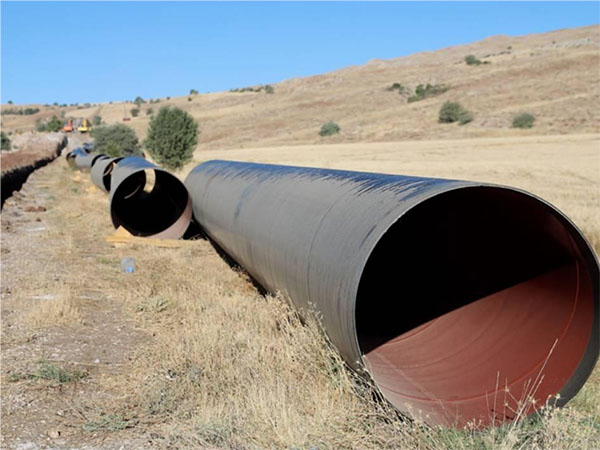Pressure pipeline refers to the use of a certain pressure, used to transport liquid or gas tubular equipment. Its scope is specified as the maximum working pressure greater than or equal to 0.1Mpa of gas, liquefied gas, steam medium or flammable, explosive, toxic, corrosive, the maximum working temperature is higher than or equal to the standard boiling point of the liquid medium, and the nominal diameter of greater than 25mm pipeline.

In pressure pipeline engineering, the selection rules of pipeline materials mainly revolve around the following aspects to ensure that the pipeline has sufficient strength, durability and safety in the long-term use process, while meeting the economic and construction requirements:
1. Working condition parameters
Working pressure and temperature
Determine the working pressure and temperature of the pipeline according to the design requirements. High pressure and high temperature environments require high strength, high temperature and creep resistant materials; At low or normal temperature, ordinary
carbon steel or low alloy steel can be used.
Fluid property
Analyze the chemical properties of the conveying medium (such as acidic, alkaline, hydrogen sulfide or carbon dioxide media) to determine whether better corrosion resistance materials or anti-corrosion measures are needed.
2. Material type and process
Carbon steel pipe
Seamless pipe: Because there is no weld, the overall performance is uniform, suitable for high pressure, high temperature and harsh conditions.
Welded pipe (such as ERW, LSAW, SSAW) : suitable for medium and low pressure transmission, its manufacturing cost is low, but in high pressure environments need to strictly control the quality of the weld.
Low-alloy steel pipe
Alloying elements (such as Cr, Mo, V, etc.) are added to improve high temperature, pressure and creep resistance, which are often used in boilers, heat exchangers and oil and gas transmission pipelines.
Stainless steel pipe
It is used for conveying systems with high medium requirements (such as health, corrosion resistance requirements) or special environments, but the cost is high.
Composite tube
For example, steel-plastic composite pipes can take into account corrosion resistance and structural strength in some cases, but their long-term service performance needs to be strictly evaluated before use.
3. Standards and norms
Material standard
The selection of materials should refer to the relevant standards, such as API 5L, ASTM A106/A53, etc. These standards have clear requirements for chemical composition, mechanical properties, dimensional tolerances and testing methods, and are the technical basis for ensuring the safe use of pipelines.
Design specification
In addition to the material standard, the engineering design specification also specifies the minimum wall thickness, tensile strength, elongation and other key performance indicators of the pipe.
4. Structure and size
Size calculation
According to the medium, design pressure and temperature, the diameter, wall thickness and length of the pipeline are reasonably calculated. Ensure that the pipe has no plastic deformation or rupture under long-term pressure conditions.
Stress resistance
The selection of pipes should meet the mechanical properties such as tensile, yield and compressive, and consider the performance consistency of welded joints and heat-affected zones.
5. Construction and maintenance
Installation and construction
The selected pipe should be easy to install on site, with better processing performance and connectivity. For example, seamless pipes are more suitable for use in complex terrain and high-pressure environments because of their good dimensional stability.
Long-term maintenance
Consider the corrosion resistance, fatigue and impact performance of the pipeline during long-term service, choose materials with higher durability, and combine anti-corrosion coating or cathodic protection measures to extend the service life of the pipeline.
6. Economy and environmental protection
Cost-benefit analysis
Comprehensive assessment of cost and life cycle management, subject to technical and safety requirements. The selection of cost-effective pipes, while taking into account production, installation and maintenance costs.
Green manufacturing
Pay attention to the energy consumption and environmental protection requirements in the pipe production process, and choose materials and processes that meet environmental standards to ensure that the pipeline system has a low environmental impact throughout its life cycle.
Summary
The selection rules of pipeline materials in pressure pipeline engineering is a comprehensive decision-making process, which needs to be considered from many aspects such as working condition parameters, material types, standards, structural design, construction and maintenance, economic and environmental protection. Only after a comprehensive analysis of the design pressure, temperature, fluid properties and long-term service conditions can the most suitable steel pipe products be selected to ensure the long-term safe, stable and economic operation of the pipeline system under high pressure environment.
